Political History of Barobazar, Khulna
The quick growth of Barobazar influenced political aggression based on various factors such as race of trade, the importance of ghats, the Barobazar connection network, the history of the 1970s-80s political evolution of nationalism, and river erosion. This blog will explore the historical transition of political affairs regarding Barobazar, Khulna.
URBAN DESIGN
Muhammad Golam Sami , Mahmuda Yasmin Dola
6/22/20204 min read


Image: Khulna Barobazar'2020 by Muhammad Golam Sami
1.Political History
The old political history of Barobazar has dramatically influenced its urban matrix.
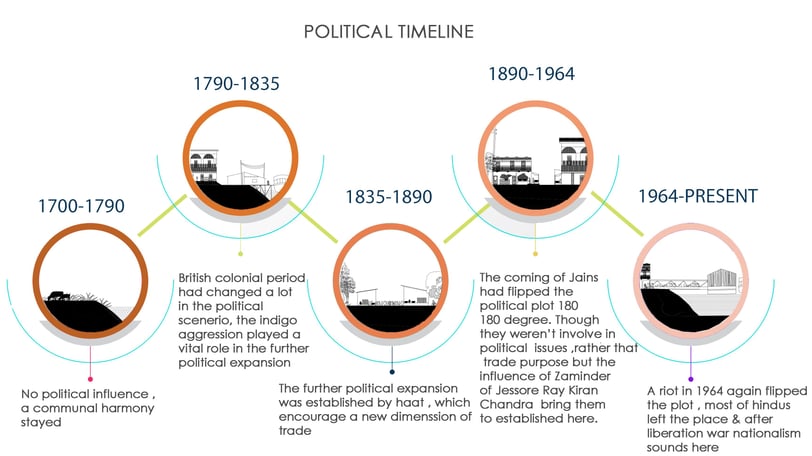

Figure 1: Political timeline of Khulna Barobazar
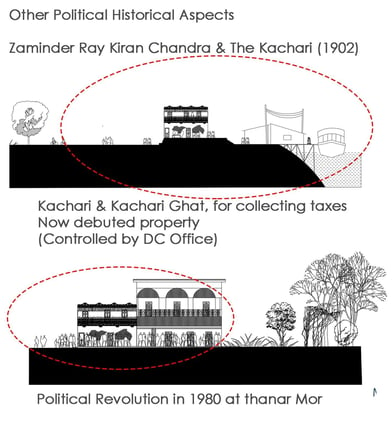

3.Socio-Political Matrix of Barobazar
Boro bazar stakeholders represent a diverse spectrum of interests. Their tasks and interests fluctuate depending on the cluster. Surprisingly, their relational matrix reveals two personalities regarding their level of contact with one another. While the local population has little involvement with the development authority and other organizations directly involved with city planning, they are firmly connected with local political leaders who endeavor to preserve their rights and save them from eviction. The leaders do not perform a humanitarian role. They have a sizable vote bank in this community. However, as the most regular and in-need customer of barobazar, this community has the least direct influence on the decision-making scenario. This chasm exacerbates intrusion by promoting a ' a'state vs. local' conflict mentality.
4.Occupancy Security
Because of its high land value, Barobazar is the city's most contested neighborhood. Through such daily and sporadic transactions between local Marwari and faraway peasants, this town would eventually transform into a combination of residential, commercial, and religious-cultural land use. However, the period between 1951 and 1955, following independence and the religion-based division of India and Pakistan as Bangladesh became East Pakistan, saw a fundamental shift in the market's total built environment's land ownership pattern. The government attempted to buy Barobazar land under the newly established State Acquisition and Tenancy Act 1950 in a pro-Islamic Pakistan (through the District Commissioner's office). This act also empowered the Municipal local government (Khulna Pourasava, later to be promoted as Khulna City Corporation in 1984) to acquire the market land to establish a Bazaar.
However, because of Barobazar's overlapping authoritative interplay, particularly regarding land tenure, the identification and demarcation of the market area would become a site of unending contestation between locals, businessmen/shop owners, and these involved government authorities. The foundation of the Khulna Development Body (KDA, the planning/development authority) in 1961, with the purpose of modernizing Khulna, brought another level of complexity to the already recurrent disputes over property titles in Barobazar. An intricate multi-ownership, therefore, would eventually be developed by simultaneous but a range of utterly uncoordinated efforts from KDA, KCC , and BIWTA (Bangladesh Inland Water Transport Agency). Fifty years of the relentless voracity of state agencies, political disinterest, and administrative ineptitude would force Barobazar into both a state of and an arena for ambiguity, particularly regarding, land-ownership. An 'institutionalized informalization' of land titling and its consequent land use through an unrelenting negotiation process between the concerned actors would become the only choice for the ordinary owners and users.
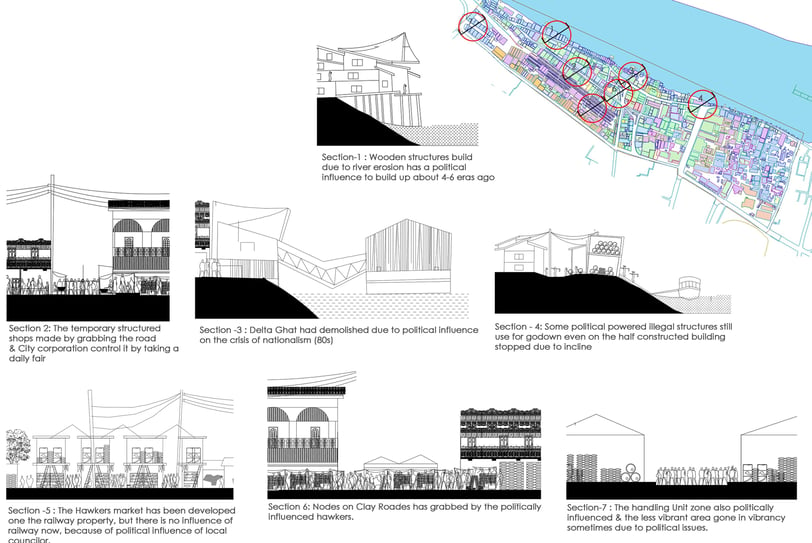

Figure 4: Level of influence of Stakeholder in The Planning Process
2.Political Spatial Dynamics of Barobazar
The quick growth of Barobazar influenced political aggression based on various factors, such as the race of trade, the importance of ghats, the Barobazar connection network, the history of 1970-80s political evolution of nationalism, and river erosion.
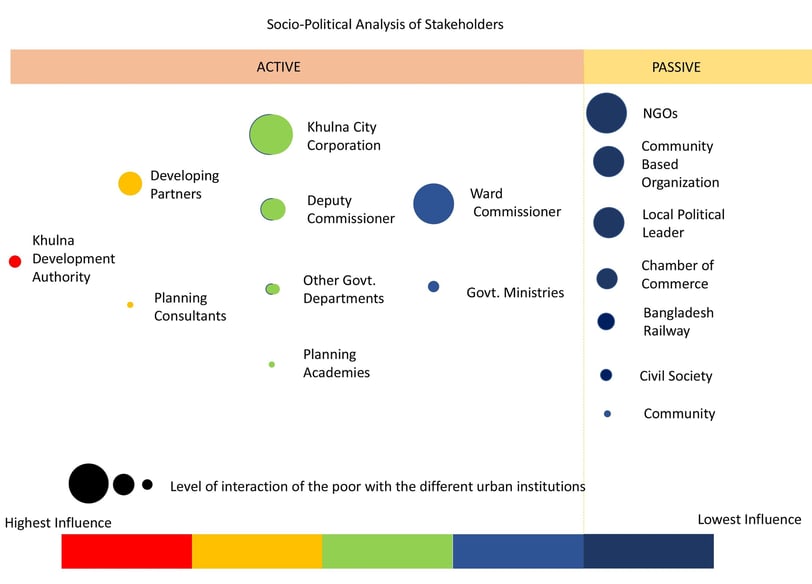

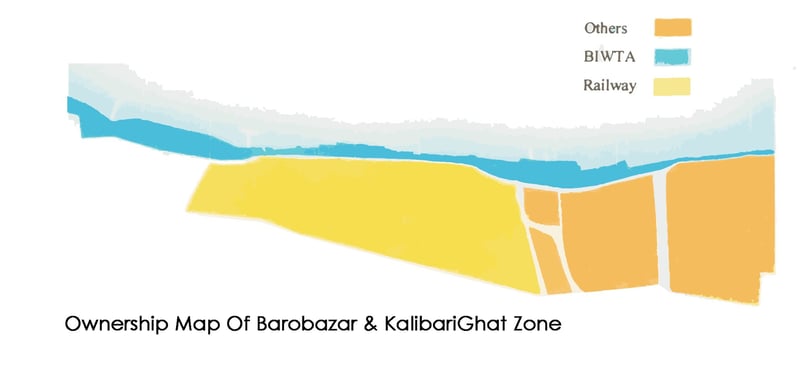

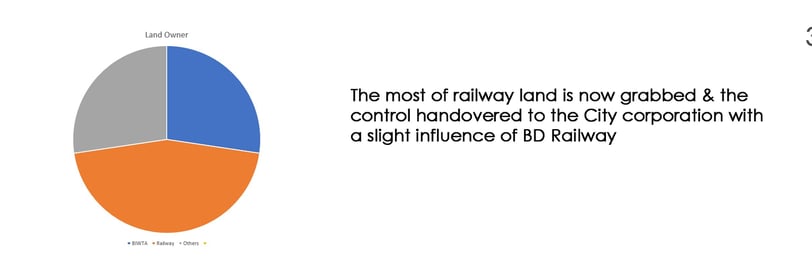

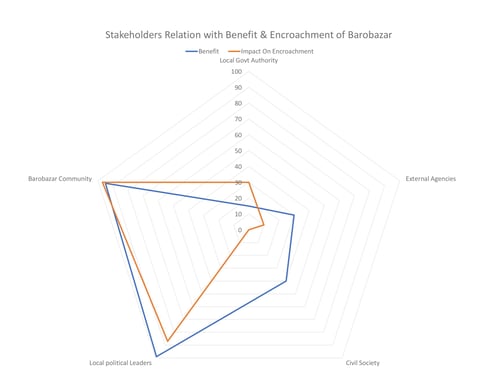

5. Agents Behind The Encroachment
The primary agents behind the encroachment of Barobazar are :
-Local Govt Authority
-External Agencies
-Civil Society
-Barobazar Community
-Local political Leaders
Acknowledgements: Syeda Nurun Nahar Zahra, Sarder Shafiqul Islam, Nahin Uddin Mollick
Figure 2: Political impact in sectional details of Khulna Barobazar
Figure 3: Political sections of Khulna Barobazar
Meet The AuthorS


Muhammad Golam Sami
B. Arch, Khulna University of Engineering & Technology, Khulna, Bangladesh Architect | Futurist | Sustainable Design Expert
Operational Head, ADORA Studios, Bangladesh
Founder, samism.org
Lecturer, Department of Architecture
Northern University of Business & Technology


Mahmuda Yasmin Dola
B. Arch, Khulna University of Engineering & Technology, Khulna, Bangladesh Architect | Analytical Practitioner
Head of Construction, ADORA Studios, Bangladesh
CMO & Head of Construction, SS Construction & Power Solution, Bangladesh
Related ARTICLES
Related PROJECTS
Regeneration of urban public realm: At the Commercial Waterfront of Barobazar, Khulna
This project design supports how the commercial waterfront of the Baro Bazar can be developed as an urban space, which will be used for human service and human welfare. At the same time, one of the objectives of this project is to retrofit the entire riverfront with its surroundings. One of the targets of this project is to restore the declining economic progress and the lost importance of the ghats. The entire project has been completed in the renovation and regeneration process.
Image: Waterfront Regeneration at Barobazar Delta Ghat
Location: KUET, Khulna; Year: 2020




